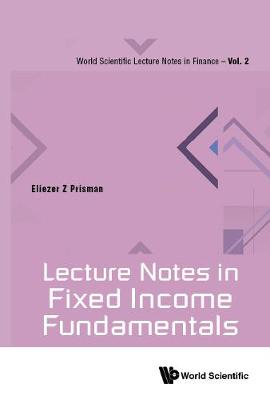World Scientific Lecture Notes In Finance
2 primary works
Book 0
Lecture Notes In Investment: Investment Fundamentals
by Eliezer Z. Prisman
Published 8 December 2020
This is an introduction to an investment course that focuses on basic models used in the financial industry for investment and decision making. The course begins with an overview of the investment environment in developed markets, followed by a more in-depth analysis of key investment topics. These topics include modern portfolio theory, asset pricing models, term structure of interest rates, stock and bond portfolio management and evaluation of portfolio performance. Modern finance extensively uses the concept of arbitrage, or rather the lack of it in financial markets, and the course highlights such uses in different circumstances.The course takes a hands-on approach with the aid of a software package, Maple™, the details of which will be explained during the first lecture. Consequently, most lectures will be divided between a theoretical lecture and a lab — a practical implementation of the theoretical material of the lecture. The use of the Maple™ software in this course simulates, to a certain extent, a professional environment. It allows visualizations of different concepts, minimizes tedious algebraic calculations and the use of calculus while equipping students with intuitive understanding. This is facilitated by the symbolic power of Maple™ and its excellent graphic and animation capabilities.Institutional material is surveyed very concisely, so the reader gets an appreciation of the investment 'lay of the land'. It is enhanced by an eLearning unit, self-administrated quizzes as well as a stock market game, utilizing StockTrack™. StockTrack™ introduces students to trading in the real world by practicing different types of orders as well as introducing conventions common in the investment community.
Book 2
Written for undergraduates, this book is dedicated to fixed income fundamentals that do not require modeling the dynamics of interest rates. The book concentrates on understanding and explaining the pillars of fixed income markets, using the modern finance approach implied by the 'no free lunch' condition. It focuses on conceptual understanding so that novice readers will be familiar with tools needed to analyze bond markets. Institutional information is covered only to the extent that is necessary to obtain full appreciation of concepts.This volume will equip readers with a solid and intuitive understanding of the No Arbitrage Condition — its link to the existence and estimation of the term structure of interest rates, and to valuation of financial contracts. Using the modern approach of arbitrage arguments, the book addresses positions and contracts that do not require modeling evolution of interest rates. As such, it welcomes readers lacking the technical background for this modeling, and provides them with good intuition for interest rates, no arbitrage condition, bond markets and certain financial contracts.

